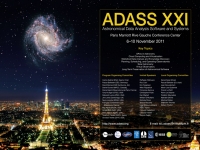Michael Fitzpatrick (NOAO)
Abstract
Although sometimes derided as a ′product of the 80's′ (or more generously, a ′legacy system′), the fact that IRAF remains a productive work environment for many astronomers today is a testament to one of IRAF's core design principles, portability. This idea has meaning beyond a survey of platforms in use at the peak of a project's active development; for true longevity, a project must be able to weather completely unimagined OS, hardware, data, staffing and political environments. A lack of attention to the broader issues of portability, or the true lifespan of a software system (e.g. archival science may extend for years beyond a given mission, upgraded or similar instruments may be developed that
require the same reduction techniques, etc) might require costly new software development instead of simple code re-use. Additionally, one under-appreciated benefit to having a long history in the community is
the trust that users have established in the science results produced by a particular system. However a software system evolves architecturally, preserving this trust (and by implication, the applications themselves)
is the key to continued success.
In this talk, we will discuss how the system architecture has allowed IRAF to navigate the many changes in computing since it was first released, examine several ′What if...′ scenarios in its history, and explore the
role of IRAF in the era of the Virtual Observatory, 'big data' detectors, and new software frameworks being contemplated. It is hoped that the lessons learned can be adopted by software systems being built today so
that they too can survive long enough to one day earn the distinction of being called a ′legacy system′.
Slides in PDF format
Paper ID: I04
|

